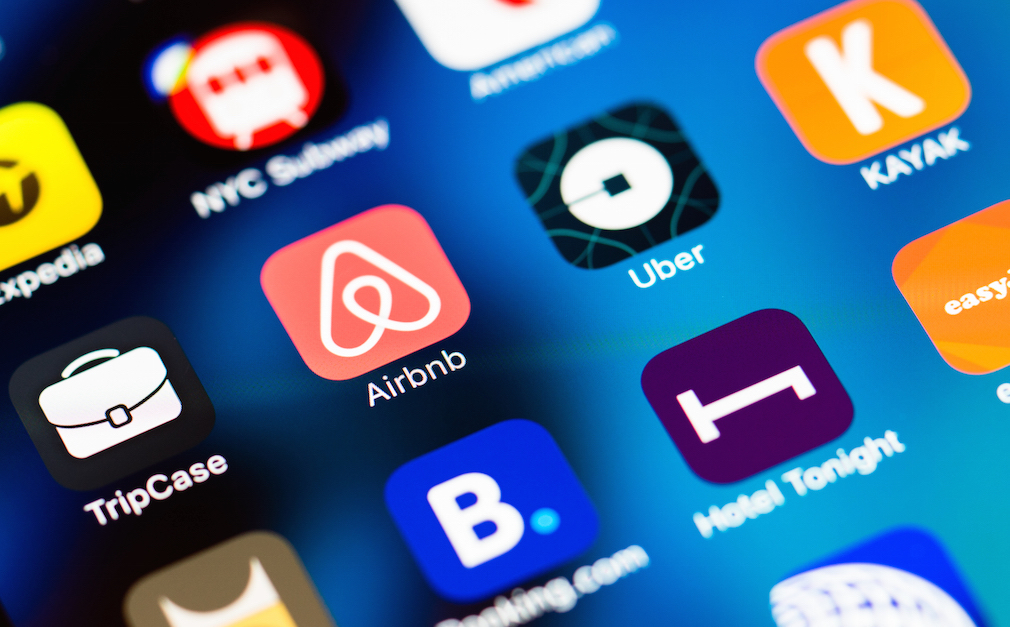When I started my business six years ago, I was able to leverage many alternative income streams as “side hustles” to make ends meet.

Columnist
I rented a room on Airbnb, was a virtual assistant, offered web design services (which I learned from YouTube), among other on-demand tasks I could scrounge up from the internet. While I may have been pretty terrible at design and organization, these jobs were readily available to me from my laptop.
With the rise of technology, Millennials entered the workforce with access to non-traditional sources of employment, which has continued to become increasingly mainstream.
Today, 34% of the entire workforce has at least one “side hustle,” and one in three millennials are considered freelancers. After a decade of nearly 20% growth in self-employed “gig workers,” much of today’s workforce has evolved to expect more flexibility and alternative sources of income.
While it’s clear that the future of our workforce is at least in part gig-based, policymakers, lenders, and freelancers themselves do not seem prepared to accommodate this shift.
The Fight for the Right to “Gig”
The nature of the gig economy leaves workers at risk in ways traditional employment does not. Freelancers and gig workers are often unprepared for a sudden loss of work or illness, and 40% say they are unprepared for retirement.
As a startup, I understand the value of employing a workforce I don’t have to commit to. I have freelancers for every job I need, and the moment I don’t need it, I can simply stop the engagement. Freelance work was designed to support someone through multiple employers or sources of income. However, for those who rely heavily on gig income or a particular source of gig income, the unpredictability can be devastating, and they are completely unprotected from its instability.
Advocates against gig employment justifiably argue that employers take advantage of a freelance workforce by preventing them from accessing employment rights and benefits through maintaining a contractor relationship. They may even use the contractor status to squeeze more hours from their workers at lower wages with limited tax implications.
In a BBC interview with the director of “Sorry I Missed You,” a film about the perils of a gig-based economy, Ken Loach states, “All the power is with the employer, and they’ve found new ways to exploit their employees.” He argues that gig workers are glorified as “self-employed owners,” when in fact they are simply “drivers with no rights.”
That’s why California recently published the AB5 bill, popularly known as the “gig worker bill,” which tightens restrictions on how much work is permitted as an independent contractor before requiring businesses to hire them as a W-2 employee.
The Problem of an Evolving Workforce
Protecting gig workers is not a black-and-white issue, and it is nuanced with the evolution of the modern approach to work.
The gig economy launched with the rise of availability of alternative work through the internet, and it gained popularity out of necessity in the recession.
However, as freelance work continued to grow and technology advanced to make this easier, millennials who entered the job market during this time of growth, often found it preferable or a valuable source of added income. Today, 31% of millennials say they work extra gig hours to boost their savings (down payment maybe?).
One survey of gig workers found that millennials who chose to work in the gig economy did so because the advantages for flexibility outweighed the disadvantages, not because they had a lack of employment options.
California’s gig worker bill supporters advocate that greedy corporations don’t want to pay for employee benefits. While I’m certain this is true, the 21st-century workforce doesn’t always value stability over flexibility.
In the midst of adopting gig-based work, the expectation has become that workers have control over when and how they work. This flexibility results in opportunities to pursue other ventures or life priorities (i.e. childcare, etc.). In a state filled with gig workers trying to make ends meet while they pursue their dreams of performing on the big screen or building the next Uber, this bill seems to crush them.
While some will justifiably argue that employers have simply found a new way to exploit their employees, others feel society should shift away from expecting employers or any one employer in a worker’s life to be responsible for other aspects of their wellbeing.
As one gig worker explained, “I’ve found the total cultural embrace of ‘full-time’ employment to be a vector for voluminous abuse. It’s specifically because we draw income from one company that they have the leverage to abuse us.”
Another stated, “The fact that US companies are responsible for the quality of life of their employees is totally hilarious in a modern world where you don’t work for the same company for your entire career.”
Today’s workforce is changing the way they think about work, and ignoring that shift won’t help anyone. In this case, the bill is an archaic solution to a modern problem, and the result may be costly for California residents.
The Financial Profile of Gig Workers
Another big issue in the gig economy is financial instability and its impact on long-term financial planning, including home buying.
Gig workers are burdened with a complex financial profile and often unable to qualify for traditional mortgages. Lenders have been slow to adopt methods to qualify self-employed borrowers despite the rapid growth in the gig economy.
Fannie Mae’s survey of 3,000 lenders found that 95% said it would be difficult to qualify gig income under current guidelines.
However, both Fannie Mae and Freddie Mac have begun pilot programs to automate underwriting for self-employed borrowers using LoanBeam’s technology, which streamlines the income verification process.
To be clear, I do not think it’s safe to lend to someone with casual or occasional gig income. However, for someone with multiple sources of consistent gig income or supplementary gig income, which can likely be scaled in a time of need, this seems like a less risky profile for lenders and a qualifiable one with today’s technology.
Embracing the Shift
The gig economy isn’t slowing down, and young people who are born into it are less likely to be willing to sacrifice flexibility for traditional employment.
Today’s employers must learn how to adapt and manage multigenerational teams with differing values and expectations in the workplace, and gig workers must adapt to the lack of protections available to them in a traditional workforce.
As an industry, we should continue to educate borrowers on the process and accessibility of homeownership with self-employed income, and support stable growth in the gig economy.






